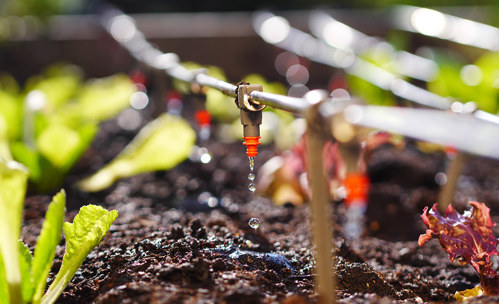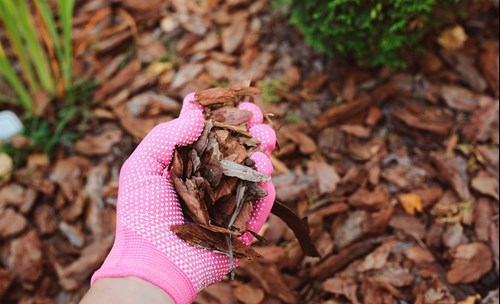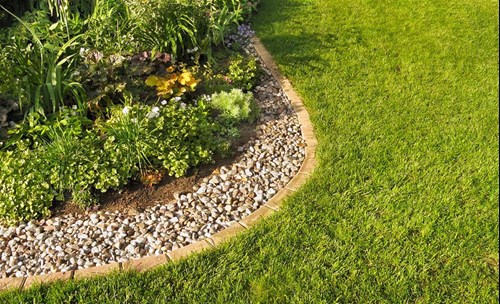Waterwise garden ideas
24 AUGUST 2023
Make your garden waterwise and you’ll never look back! Waterwise gardening – also called xeriscaping – is a way of landscaping that reduces or even eliminates the need to water your garden. The great thing about waterwise gardens is that they don’t just use less water, they also tend to require less maintenance.
Waterwise gardening – also called xeriscaping – is a way of landscaping that reduces or even eliminates the need to water your garden. The great thing about waterwise gardens is that they don’t just use less water, they also tend to require less maintenance.
It takes just a bit of planning and a small upfront investment to redesign your garden with the right kind of plants, irrigation and ground coverings. Then you’ll reap the benefits of a beautiful garden that stays happy and healthy in even the driest weather and with the most stringent water restrictions. Apply for an RCS Personal Loan, and you could be granted a cash loan of up to R150 000 to help transform your garden into a waterwise wonderland.
Here are seven waterwise garden ideas that won’t force you to sacrifice style to save water:
GREEN YOUR GRASS
Conventional lawns have been called the gas-guzzling SUVs of the plant world. They need constant mowing, fertilising and watering to keep them looking good. If you really want to keep your lawn, consider planting hardy, drought-resistant indigenous grasses like buffalo grass. Alternatively, take it one step further and fake it. Artificial lawns are wonderfully low maintenance and look good for up to 15 years. They’re available in a wide range of grass types, tuft heights and shades of green. Artificial grass is perfect for balconies, terraces and courtyards. It’s also a great solution for shady patches under trees, or to use around pavers.
GET TO THE ROOT OF THE PROBLEM
Most irrigation systems involve watering from above. Unfortunately, this wastes up to 65% of the water, which either evaporates or doesn’t sink deep enough into the soil to reach the roots. And, they can actually make your garden more susceptible to drought, as shallow irrigation encourages roots to grow closer to the surface. Soaker hoses or drip irrigation systems slowly weep water into the soil below the surface, both saving water and delivering it deeper down to create healthy root systems.
SORT OUT YOUR SOIL
Once you’ve got water into the ground, you want to hold it there and keep it in the soil for as long as possible. Digging in plenty of compost improves your soil’s water retention, as well as adding nutrients and stimulating earthworm activity. Mulch, which is usually bark, dried leaves or wood chippings that you spread on top of the soil, helps to keep soil cool and reduces evaporation and run-off. Mulch also suppresses weed growth, making it a double win for garden maintenance.
ELIMINATE EXOTICS
Indigenous plants not only tend to use less water than exotics, but are usually more resistant to drought and changes in temperature. Use SANBI’s advanced plant search to find indigenous plants that are right for your garden. You can not only search by the type of plant you want, the colour of its flowers and how easy it is to grow, you can also specify your soil type, horticultural zone, and how much sun exposure it will get. You can even search for plants that attract birds or butterflies, or ones that are drought resistant or have medicinal qualities.
SWITCH TO PERMEABLE PAVING
Most concrete or paved areas in courtyards and driveways, on pathways or around swimming pools don’t allow water to seep through into the soil below. But, if you switch to using permeable paving in those areas, water will be able to drain through into the ground. You can use river pebbles or gravel for a natural look, or use interlocking pavers. These come in a variety of shapes, colours, and materials that allow water to percolate through cracks between them and, in some cases, through the pavers themselves.
GROUP YOUR PLANTS
By creating ‘hydro-zones’ in your garden, you’ll be able to water some areas of your garden less than others, and reduce your overall water consumption. Divide your garden into different zones and group plants according to their water needs. You can apply the technique to an existing garden by moving plants during their dormant periods. High-water-use zones should be relatively small (around 10% of your garden), while low-water-use zones should form the largest part of your garden. These consist of plants that can survive mostly on rainwater, with very little irrigation. You can even create no-water-use zones, consisting of established indigenous plants.
USE ALTERNATIVE WATER SOURCES
Instead of using precious municipal drinking water in your garden, install a greywater system to divert used household water to your plants, and start harvesting rainwater, which can be stored and used later to keep your garden green.
Ready to get waterwise? Apply for an RCS Personal Loan, and you could be granted a cash loan of up to R150 000, with flexible repayment options from 12 to 60 months.



